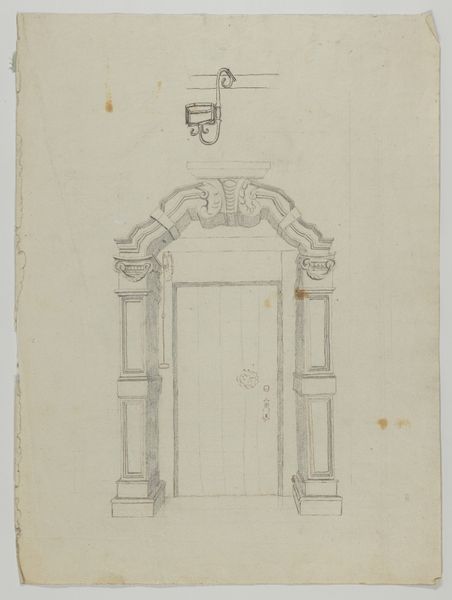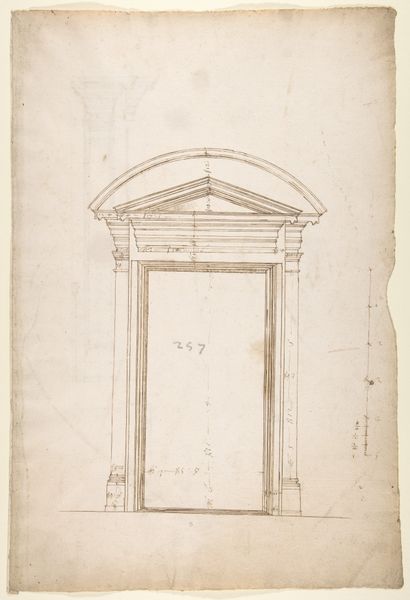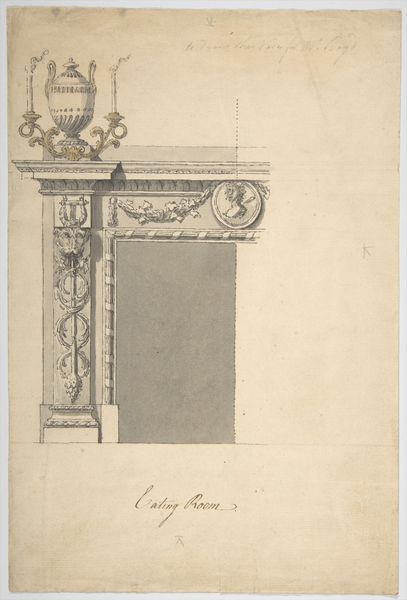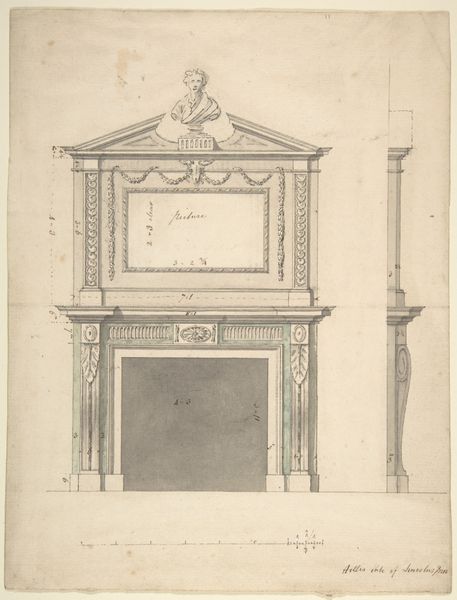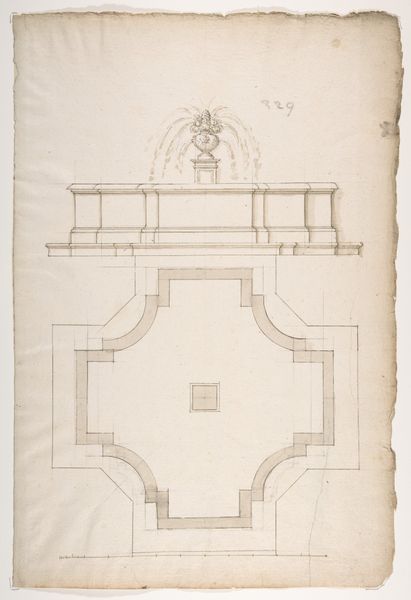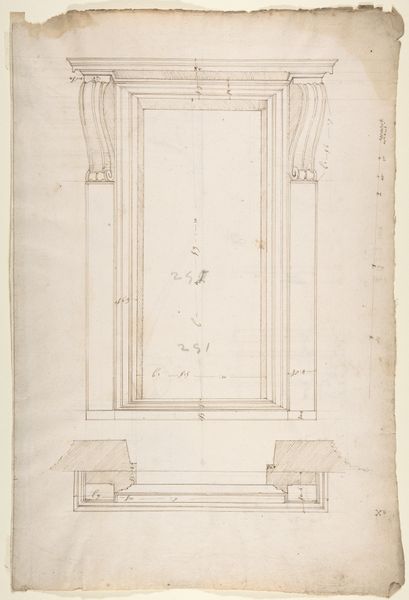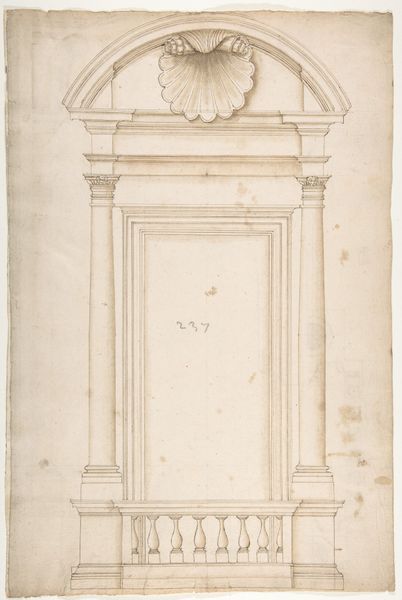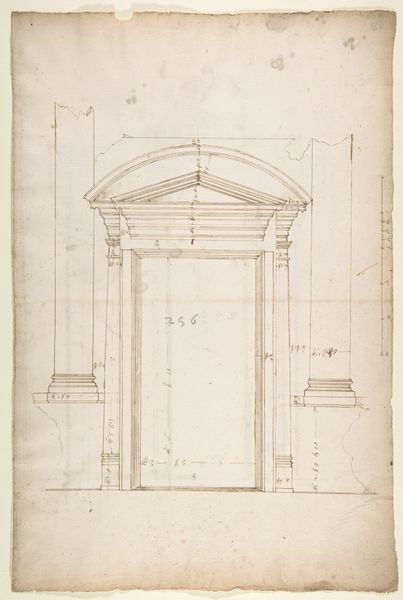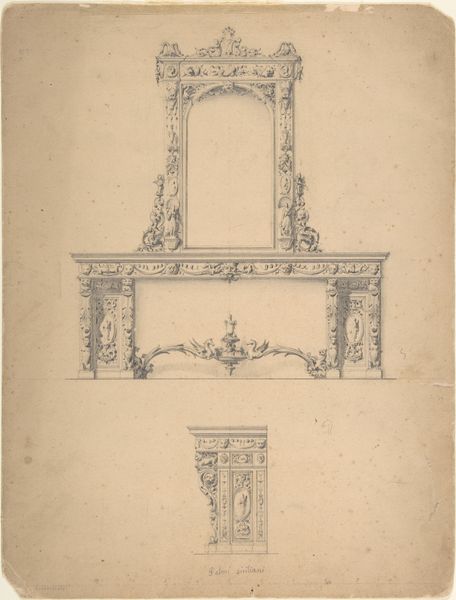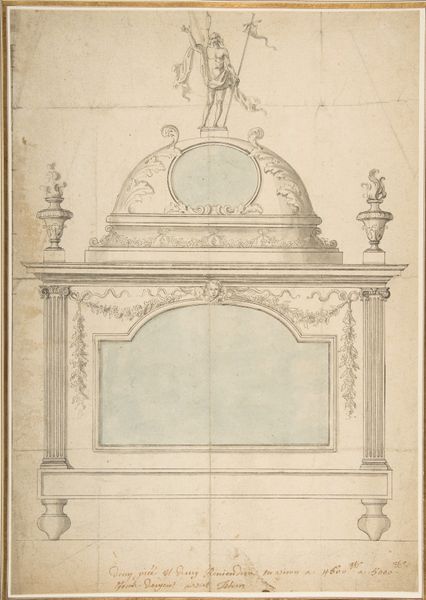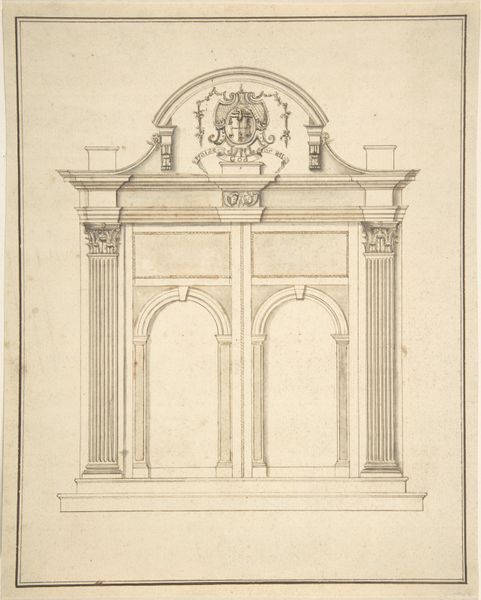
drawing, print, architecture
#
drawing
# print
#
landscape
#
figuration
#
line
#
italian-renaissance
#
architecture
Dimensions: sheet: 17 5/16 x 11 1/2 in. (43.9 x 29.2 cm)
Copyright: Public Domain
Curator: Well, isn’t this fascinating? Here we have a drawing, a “Plan and Elevation for a Fountain,” dating back to the 16th century. Its creator is currently listed as anonymous, and it resides here at the Metropolitan Museum of Art. Editor: Striking in its simplicity, almost stark. It feels very classical, Roman even, but also restrained. The figure on top gives it a lift though; without it the symmetry would be overwhelming. Curator: Indeed. Fountains in the Renaissance served as both functional water sources and powerful statements of civic pride and patronage. Think about the politics of water, who had access, and how displaying control over such resources reinforced social hierarchies. Editor: Absolutely. The placement of that lone nude figure—it calls to mind idealized antiquity and purity. Consider also, fountains as gathering places: visually anchoring both practical and social ritual in daily life. A source of not just water, but stories. Curator: And the very act of producing such a meticulous drawing. These weren’t mere sketches, but serious proposals intended for discerning clients, intended to be presented within social circles capable of bringing it to reality, with serious public impact. Editor: I notice the precise lines and carefully considered measurements. It conveys such a strong sense of order. And there's a very clear symbolic structure. The layers almost create a pyramidal structure reaching up to that single human figure which serves almost as a symbol of perfection and elevated man. Curator: A reflection, perhaps, of the humanist ideals then permeating artistic and intellectual circles. Beauty, proportion, harmony... these fountains were never *just* fountains. Editor: True. And what lasting ripples they continue to create: echoing and shaping our relationship to beauty, to nature, and to water itself. Curator: The beauty in the fountain design remains strong as its commentary on a bygone society, culture, and political world. It all comes into sharp focus as a relic that informs and enthralls. Editor: Indeed. A lovely reminder of the hidden stories even in something seemingly simple. The enduring power of imagery!
Comments
No comments
Be the first to comment and join the conversation on the ultimate creative platform.

